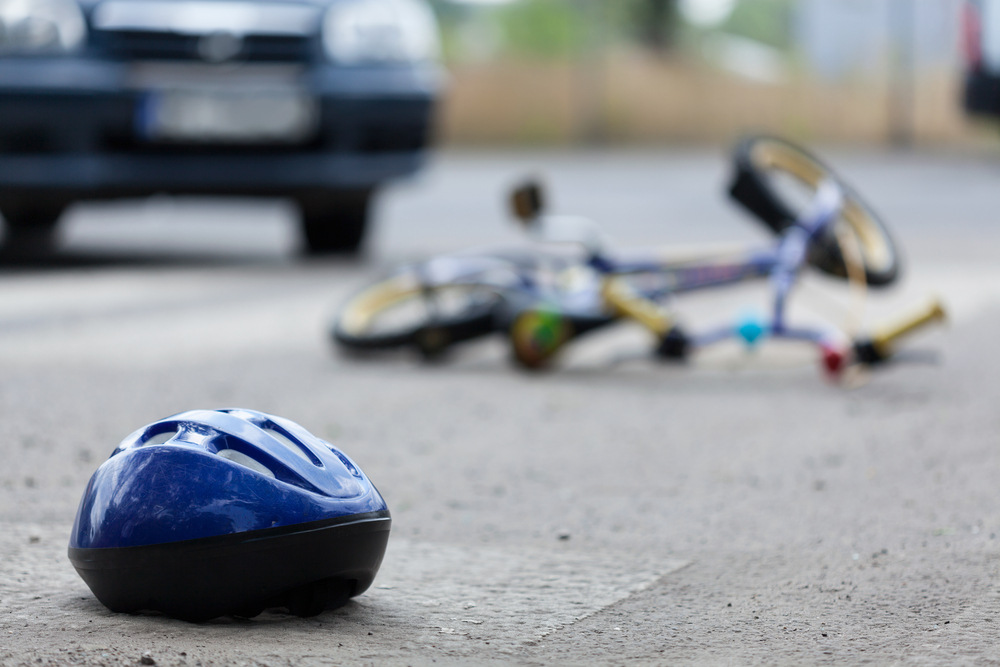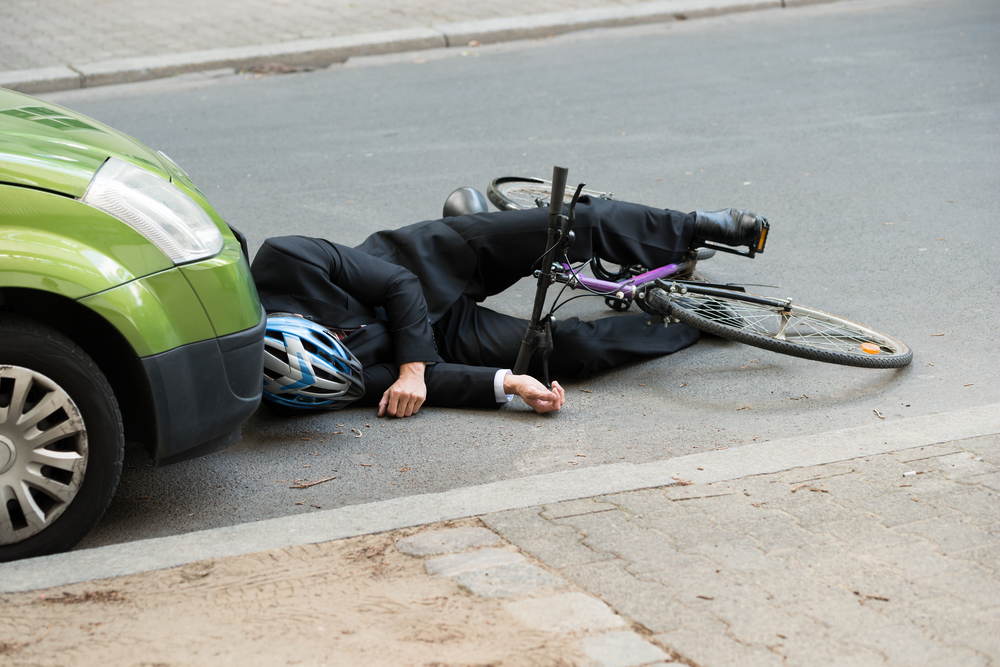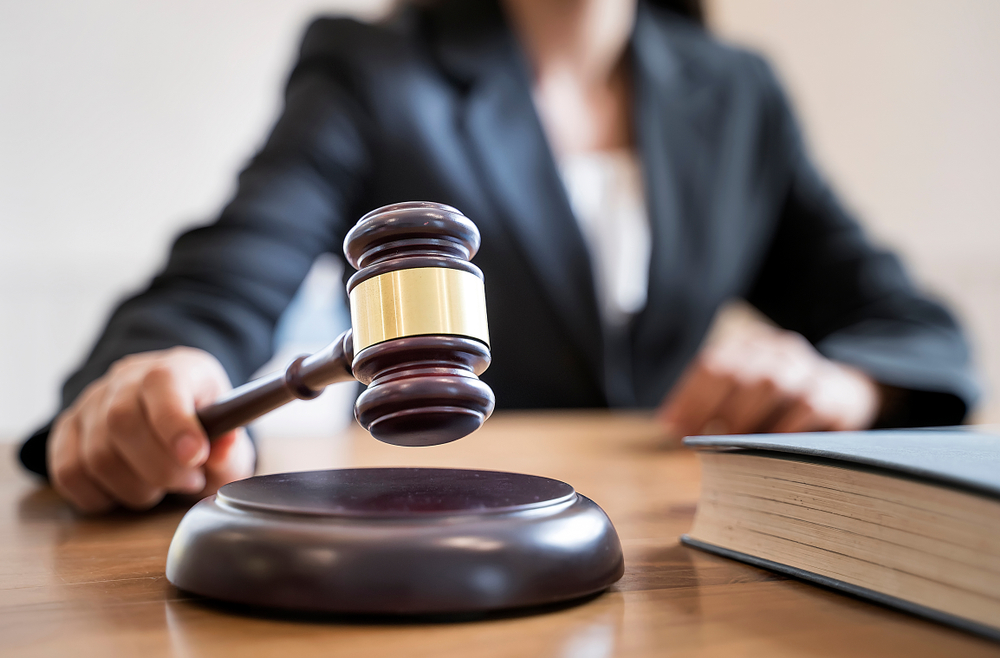Bicycle accidents in Edmonton can occur anywhere bicycles and motor vehicles are present simultaneously. Because cyclists have very little protection in an accident scenario, they are likely to suffer severe injuries, some of which may be permanent.
You may have legal options to consider if you suffered injuries in a recent bicycle accident and someone else was to blame. An experienced bicycle accident lawyer in Edmonton can handle every step of the legal process by investigating your bike accident circumstances, filing a claim with the appropriate insurance carrier, and negotiating a favourable settlement offer. If the insurance company refuses to compensate you fairly, your lawyer can pursue a lawsuit in the court system for the financial compensation you need.
Common Locations for Bicycle Collisions in Edmonton

Like any urban area, Edmonton, Alberta, has specific locations where bike accidents are more common. One frequent site is traffic intersections, where cyclists and motorists share space. Collisions often occur when vehicles make turns without noticing oncoming cyclists or fail to yield the right-of-way to cyclists. Enhanced signage, dedicated bike lanes, and increased awareness by other drivers can contribute to reducing accidents at traffic intersections.
Another frequent location for bike accidents in Edmonton is along busy roadways and major thoroughfares. High traffic volumes and faster speeds increase the risk of collisions between bicycles and vehicles in these locations. Establishing protected bike lanes and incorporating traffic-calming measures can enhance safety on these routes, providing a dedicated space for cyclists and reducing the likelihood of accidents.
Parking lots are also surprisingly common sites for bike accidents. Cyclists and motorists maneuvering through crowded parking areas may face visibility challenges, leading to collisions. Improving lighting, installing clear signage, creating designated bike parking zones, and driving safely can help mitigate the risks in these locations.
Construction zones can also pose additional challenges for cyclists in Edmonton. Altered traffic patterns, uneven surfaces, and reduced visibility can increase the likelihood of accidents. Clear signage, detour routes, and improved communication between construction crews and cyclists are essential to navigating these areas safely.
Understanding the common locations for bike accidents in Edmonton allows for targeted safety measures. A combination of infrastructure improvements and collaborative efforts between cyclists and motorists can create safer conditions for bike riders in the city. However, despite all possible safety measures, cyclists are still vulnerable to vehicle collisions.
If you suffered injuries in a bike accident in one of these locations, an experienced bicycle accident lawyer can investigate your circumstances and aggressively pursue a personal injury claim for compensation.
Bicycle Accident Causes
Bicycle crashes in Edmonton, Alberta, often result from a combination of factors, including both environmental conditions and human behaviours. One prevalent cause is the lack of dedicated cycling infrastructure. Without proper bike lanes or pathways, cyclists have to share busy roads with motor vehicles, increasing the risk of collisions. Enhancing the city’s infrastructure by implementing more bike lanes and creating separated cycling paths can significantly reduce this risk.
Another common cause of bicycle crashes in Edmonton is driver inattention or distraction. Motorists failing to notice cyclists, especially during turns or lane changes, can lead to accidents. Raising awareness among drivers about the presence of cyclists on the road and educational campaigns on sharing the road safely can help address this issue. Unfortunately, other drivers do not always pay attention or do the right thing.
Dooring incidents, where cyclists collide with a car door that the occupant suddenly opens, are frequent in urban areas like Edmonton. To prevent such crashes, vehicle drivers and passengers should open their car doors with the hand farthest from the door. This step may increase driver and passenger awareness of cyclists approaching from behind.
Driving while under the influence of alcohol or drugs is another significant factor contributing to bike accidents in Edmonton. When car and truck operators drive their vehicles while intoxicated, they may experience various physical and mental symptoms, including blurred vision, delayed reflexes, delayed reaction time, poor muscular coordination, and confusion. As a result, they may be unable to stop their vehicle in time to avoid hitting a nearby cyclist.
Left-turn conflicts at intersections are also a notable cause of bicycle crashes. Motorists turning left may not always anticipate or yield to oncoming cyclists, leading to collisions. Improved signage, dedicated bike boxes at intersections, and public education on the vulnerabilities of cyclists can help mitigate these potential conflicts.
Addressing the most common causes of bicycle crashes in Edmonton requires a multifaceted approach, including infrastructure improvements, educational initiatives, and increased awareness among motorists. If a negligent motorist caused your bicycle crash, an experienced personal injury lawyer can review your legal options and file a claim with the responsible driver’s insurance company on your behalf.
Potential Injuries in an Edmonton Bicycle Accident

Bike accidents can result in various injuries, ranging from minor scrapes to severe trauma. One common injury is road rash, caused by the friction between the skin and the pavement during a fall from a bike. These abrasions can be painful and may lead to infections when improperly cleaned and treated.
Fractures are also common among bike riders involved in accidents. The force of a collision or fall can lead to broken bones, with the wrists, collarbones, and ankles being particularly vulnerable. Treatment may involve casting or surgery, depending upon the severity of the fracture.
Head injuries also pose a significant risk, emphasizing the importance of wearing helmets. Concussions, skull fractures, and traumatic brain injuries can occur if the accident victim’s head hits the ground or another object. Helmets absorb impact energy and reduce the risk of severe head injuries, making them a crucial protective measure for bike riders.
Muscle strains and sprains are also common, especially in bike accidents involving sudden stops or falls. During such incidents, the force exerted on muscles can lead to overstretching or tearing. Recovery may include rest, physical therapy, and anti-inflammatory medications.
Spinal injuries, though less common in a bike accident, may also have serious consequences. The spine may suffer damage in high-impact accidents, potentially causing paralysis or long-term disabilities. Finally, cuts and lacerations in a bike accident can result from contact with sharp objects or broken glass.
Local bicycle accidents can result in a broad spectrum of injuries. If you suffered one or more of these injuries in your bicycle accident, an experienced personal injury lawyer in your area can begin fighting for your legal rights while you receive the medical treatment that you need.
Proving a Bicycle Accident Claim or Lawsuit
Successfully proving a bicycle accident claim involves careful documentation, adherence to legal procedures, and gathering evidence to support your case. Here’s a guide on how to navigate the process effectively:
- Seek Ongoing Medical Attention for Your Injuries – After an accident, prioritize your health. Visit a healthcare professional to document your injuries and follow through on all recommended medical visits and procedures.
- File a Police Report – Find your local police and file an official report. This document can be valuable when dealing with insurance companies and legal proceedings, as it provides an unbiased account of the accident. The report may also describe how the accident happened, state who was at fault, and indicate whether the responding police officer issued the at-fault driver a traffic citation (and if so, why).
- Preserve Available Evidence – Keep records of all relevant documents, including lost income documentation. These records help establish the financial impact of your accident.
- Consult with a Bicycle Accident Lawyer as Soon as Possible – Seek legal advice from a personal injury lawyer experienced in handling bicycle accident claims. They can guide you through the legal process, assess the potential strengths and weaknesses of your case, and navigate negotiations or litigation in the court system.
- Obtain Surveillance Footage – If the accident occurred in an area with surveillance cameras, obtain footage that may have captured the incident. Video evidence can be compelling in establishing fault in your personal injury claim or lawsuit.
- Communicate with Insurance Companies (including your own) – Notify your insurance company promptly, providing them with all necessary documentation. Be cautious when communicating with the at-fault party’s insurer, and consult with your lawyer before providing any statements (including recorded statements).
- Keep a Personal Injury Journal – Record your experiences, including pain levels, emotional distress, and the effect of injuries on your daily life. This journal can serve as a personal account of the ongoing effects of your bike accident.
Successfully proving a bicycle accident claim involves a strategic and comprehensive approach. By documenting the incident thoroughly, seeking professional legal advice, and adhering to legal procedures, you enhance your chances of securing a favourable outcome in your bicycle accident claim or lawsuit.
What Happens During a Bicycle Accident Trial?

Bicycle accident cases usually go to trial when the at-fault party’s insurance company denies fault for the accident – or if they refuse to make the injured accident victim an appropriate settlement offer. In a bicycle accident case that goes to trial, the legal process unfolds in either a bench or jury trial. A judge presides over the proceedings at a bench trial and makes all determinations of fact and law. The trial typically proceeds as follows:
- Opening statements by the lawyers
- Plaintiff’s case (where the accident victim’s lawyer introduces evidence and calls witnesses)
- Defendant’s case (where the at-fault driver or insurance company’s lawyer introduces evidence and calls witnesses)
- Closing arguments
- Judgment as to the monetary compensation the injured bike accident victim receives
In a jury trial, a group of impartial individuals, the jury, is selected to hear the case and decide its outcome. The trial process is somewhat similar but involves additional steps:
- Jury selection
- Opening statements
- Witness testimony and evidence
- Jury instructions
- Deliberation
- Verdict
Whether a bench or jury trial, the goal is to present a compelling case that persuades the fact-finder of the merits of your bicycle accident claim, whether the judge or a jury. A bicycle accident lawyer can aggressively litigate your case and pursue the maximum monetary compensation you deserve.
Recovering Monetary Damages for Injuries in a Bike Accident
In a bicycle accident case, the injured party may be eligible for both economic and non-economic damages, aiming to compensate for various losses incurred due to the incident.
Economic Damages
- Lost Earnings – If the bike accident victim misses work due to injuries sustained in the accident, economic damages may include compensation for lost income. This encompasses current income loss and potential future earnings if the injuries result in long-term or permanent impairment.
- Loss of Earning Capacity – If the accident victim’s injuries are so severe that they cannot return to the same job (at the same pay rate), the accident victim may pursue a claim for loss of earning capacity.
Non-Economic Damages
- Pain and Suffering – Pain and suffering damages often include compensation for physical pain, emotional distress, and suffering experienced as a result of the bicycle accident. These subjective and intangible losses are challenging to quantify but crucial to personal injury claims and lawsuits.
- Loss of Consortium – In cases where the injuries significantly affect personal relationships, non-economic damages may be available to compensate for the loss of companionship, intimacy, or support.
- Emotional Distress – Severe emotional trauma, anxiety, depression, or other psychological effects resulting from the accident may be available in non-economic damages.
- Lost Quality of Life – If the bike accident significantly affects the victim’s ability to enjoy life’s activities, non-economic damages may compensate for this diminished quality of life.
Determining the appropriate compensation for economic and non-economic damages involves thoroughly assessing the specific circumstances surrounding the bicycle accident. A bicycle accident lawyer in your area can aggressively advocate for your legal rights and work to maximize the overall monetary award you receive.

Call a Skilled Edmonton Bicycle Accident Lawyer Today
If you sustained injuries in an Edmonton bicycle accident, you need to get legal help right away. According to the statute of limitations, bike accident victims must ordinarily file a personal injury lawsuit within two years of their accident date. Otherwise, they may inadvertently waive their right to recover monetary damages for their accident-related injuries.
An experienced Edmonton personal injury lawyer can explore all your legal options and pursue the settlement award or litigation compensation you deserve to recover for your accident-related losses.
